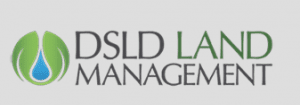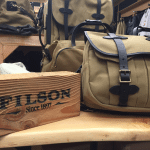presented by: DSLD Land Management
Drought to Drainage: 4 Most Common Residential Drainage Problems & Solutions
The recent drought has led all of us to be particularly grateful for rain, but with the heavy downpours, you may see problems in your yard where drainage is an issue. Without proper drainage, water can collect, cause damage to structures and kill expensive plants and trees. If you are experiencing water problems, a well-designed drainage solution system is a top priority for maintaining your investment. The top four most common drainage solutions are:
- Surface Drainage. Many home sites have uneven grades, especially in some of the hillier areas, where water becomes trapped, causing flooding and muddy areas in lawns and shrubbery. A drainage specialist can create a drainage plan utilizing surface grading to allow for proper drainage. Correcting the problem on the surface is usually the most economical solution and is preferred due to the fact that you do not limit the capacity of the water being shed. If surface grading is not an option, other below ground solutions exist.
- Positive Flow Subsurface Drains. This common drainage solution collects water, usually from your roof’s gutter and downspout pipes or strategically installed catch basins, then runs it underground to discharge into a lower area, preferably the driveway or street.
- Subterranean Leach Field Drains (Common Misnomer “French Drain”). These drains collect water that comes from under your house or yard. As the water table rises underground springs or aquifers may manifest themselves by creating soggy places in your yard or perhaps even presenting as wet spots in your drive, house slab or basement. This drainage problem requires someone very experienced in identifying the exact location of the breach and able to find the most economical solution. Many times a gravity drain will work, while other times, due to the elevation of the breach, a pump may be installed to discharge the water to a higher elevation. Often, hardpan soil layers exist and the entire site may be affected by poor drainage and standing water. In these cases, spot solutions as referenced above, simply won’t work. A site-wide grading and drainage solution plan is necessary, including an underground system of pipes fed by drop inlets or trench drains, making it easier for water to run off site and funnel directly into a storm drain.
- High Water Table. If your home site is in a low lying area with a high water table, you have probably noticed what a challenge landscaping these areas can be. Over saturated plant roots, especially for an extended period of time, can quickly rot, resulting in damage and often dead plants. It’s best to choose plants and shrubs that originate in river bottoms and wetlands if possible. Another solution for high water table landscapes is to raise the planting areas. This will allow you more options on what types of plants, trees and shrubs you can safely plant and grow.
Drainage solutions are essential to the health and beauty of your property. Contact us for more information about drainage solutions or to set up a consultation.
 David Sharp, Owner DSLD Land Management
David Sharp, Owner DSLD Land Management 
Bringing quality and value to Birmingham homes since 1983.
205-437-1012, www.dsldland.com







